Back alleys as spaces of urban exploration
If I have time or I’m doing research, I explore neighborhoods of large urban environments, and if I feel safe the back streets and alleys located there.
For me the back alley, in particular, is place to escape, to experience distraction and possible danger, for reflection, and inspiration for creative activities; a place that might provide a shortcut, an opportunity.
Back alleys are also important to me because many of the individuals and the activities that they engage in that I study spend considerable time in these public spaces. In particular, important social actors transit through, work and occasionally live in the back alley including the homeless, dumpster divers, police officers, graffiti writers and street artists.
What do back alleys look like; how would I describe them?
There is a different sense of order in the back alley as compared to the front or façade of the buildings that line the alley.
In addition to the road which might be constructed out of asphalt, stone or brick, drainage is less important in back alleys as it is in the front of the buildings. Because of poor or nonexistent drainage, there are often puddles of water located there, alongside vehicles parked in the back alley, some of which are abandoned. We might also see rodent bait stations, that are used for rat abatement.
Back alleys typically have lots of doors leading to apartment buildings or businesses. The brick or concrete at the back of buildings is frequently a different color than at the front. Why? It’s cheaper to use these kinds of materials in these places. Often pieces of brick and concrete at the lower levels of the buildings are missing because over time, all types of vehicles have hit the structures. Sometimes the walls have graffiti or street art or both placed on them. We may see graffiti on the walls and on the garage doors on the loading docks. We may also see electrical poles that are hidden from the main streets.
Look further up the walls and depending on the city and the age of the building, you might also see metal fire escapes typically painted black. There are also signs with messages like no trespassing, no soliciting, no loitering, and violators will be prosecuted that are posted, and sometimes CCTV cameras strategically located on the buildings.
It’s typically dirtier in back alleys than in the front of the building. Garbage, waste and other sorts of debris in addition to metal dumpsters, of all different sizes, are frequently laden with graffiti, and sometimes with stickers at the back of buildings in the alley are visible. The smell of sewage and rotten trash is often noticeable.
People are often unhappy in the back alley. Sometimes homeless people sleep in the shelter of a door well at the back of buildings. If they’re not resting, they may have left their personal belongings there, hoping no one will steal them, while well they panhandle or forage for food on the street.
Not only is the back alley often a repository of human waste, the cast offs, and the wreckage, but a place of commerce and consumption (beyond informal, and illegal transactions, the sale of stolen goods, the practice of “forbidden” and illicit sex, and the use and sale of illegal drugs), and temporary residence (for the down and out).
Finally we may find animals that are rummaging for food or taking shelter. I’ve encountered stray cats and dogs. Dogs that homeless people may have as company might be hiding. Rats, raccoons, and mice too numerous to mention are located in these areas.
Not all cities have back streets and alleys, but most large urban centers do. The back alley is a subset of a larger whole (the city and neighborhood), and it is deserving of scholarly attention.
In urban planning, urban geography, and street crime, one of the frequently neglected aspects of the urban setting are the back alleys of our large urban environments, and what takes place there.
In many respects, the back alley conforms to what sociologist Erving Goffman in his book The Presentation of Everyday Life, said about the back stage; that physical area that is hidden to most people where a different language, behaviors and norms are engaged in and activities displayed.
The public frequently neglects the back streets alleys and tends to concentrate their activities on the façades of buildings. That’s understandable because important sources of commerce, are typically located on the main streets (or front stages). Rarely acknowledged, however, is that the front stage would not be able to properly function without the backstage (i.e., the back streets and alleys).
Some cities, due to urban development, have more back alleys than others, and over time back alleys change, sometimes transformed into livable or green spaces. We see this happening in locations where the property prices are very high, and property developers are willing to construct alternative housing arrangements. Occasionally back alleys are turned into cute enclaves where hipster businesses are located like technology or media companies, cafés, and music venues use them as entrances to clientele.
Part of the back alley phenomenon has to do with how the city grew and/or was originally laid out.
There is complexity and diversity in back alleys, to be explored, to be digested, to be categorized, and from which social scientists can draw connections to traditional scholarship.


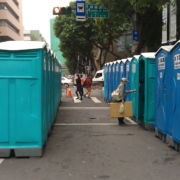
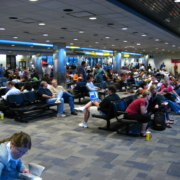



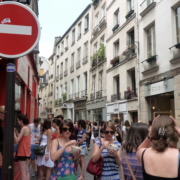
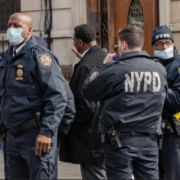
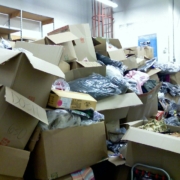

 Creative Commons
Creative Commons